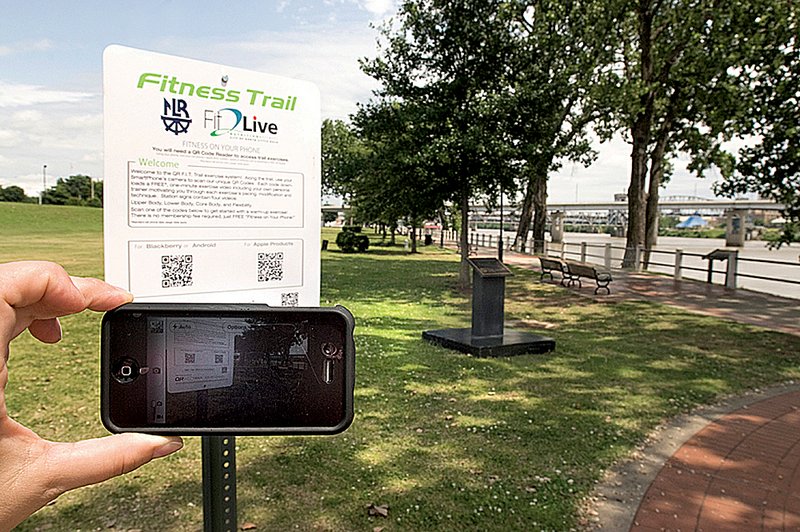LITTLE ROCK — North Little Rock has installed an updated-for-the-Internet-Age reinterpretation of the Fit-Trail concept: six QR F.I.T. Trail stations.
Remember the old Fit-Trail exercise stations? These were asphalt, mulch or pea gravel corrals holding a few cedar planks, posts and maybe some chin-up bars. Plopped beside jogging trails or tucked into odd corners of city parks, they offered opportunity and also mystery - what were you supposed to exercise atop that short post?
Like art installations representing the veneration of the concept of exercise (if not its practice), a few of these decrepit structures can still be found around the state.
North Little Rock’s new QR F.I.T. Trail stations are metal signs set along the downtown Arkansas River Trail, between the main gate at Willow Street and the foot of the Clinton Presidential Park Bridge. If you have a smart phone, you can use them for an impromptu,Internet-guided outdoor workout.
To use the signs, you download a free QR reading application from your phone’s app store. QR (quick response) codes are square, two-dimensional matrixes encoded with website addresses.
You point your phone at the sign, run the app, and your phone opens a website with video instructions for exercises.
Each workout covers one of four areas: core, upper body, lower body or flexibility.
QR F.I.T. Trail is like the old outdoor wooden exercise stations “in the sense that people can visit the stations whenever they wish to, so it’s always there for them. And they can workout on their own,” says Bernadette Rhodes, the city’s Fit 2 Live coordinator.
“But it’s different in the sense that they’re using technology to access the exercises by going to these videos on their phone, and also in that, every month, the video that a QR code takes you to will change.
“So it’s a dynamic exercise routine.”
Use of the signs and access to the Internet programs for five years cost the city $4,733.75, which also includes one year of reporting on how often the signs are used.
“We paid for this out of our Communities Putting Prevention to Work grant, where we were awarded $1.5 million for policy and environmental changes to fight obesity,” Rhodes says. “It’s funded through the Centers for Disease Control and Prevention under the Affordable Care Act and it’s administered by the Arkansas Department of Health.”
The grant will also be used to refurbish the city’s aged Fit-Trail stations, including one on the River Trail just west of the Broadway Bridge.
“They look like little raised garden beds,” Rhodes says. “People still use them.”
ActiveStyle, Pages 27 on 05/14/2012

